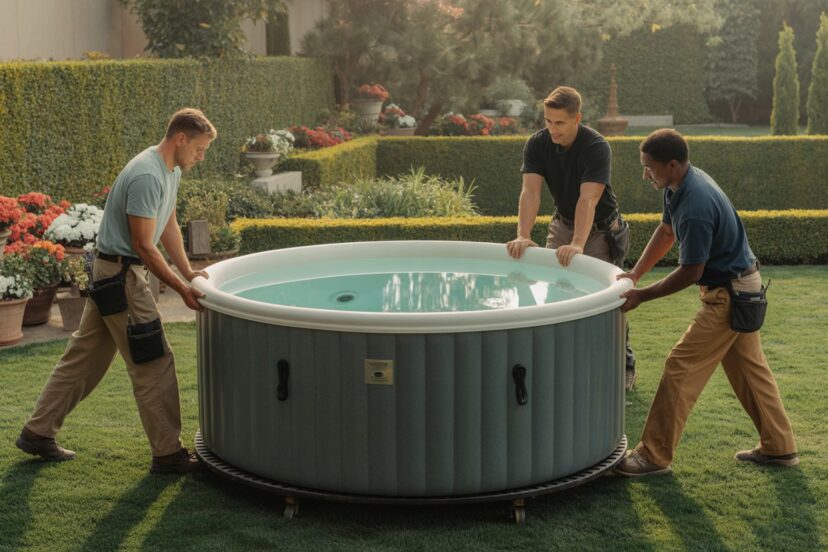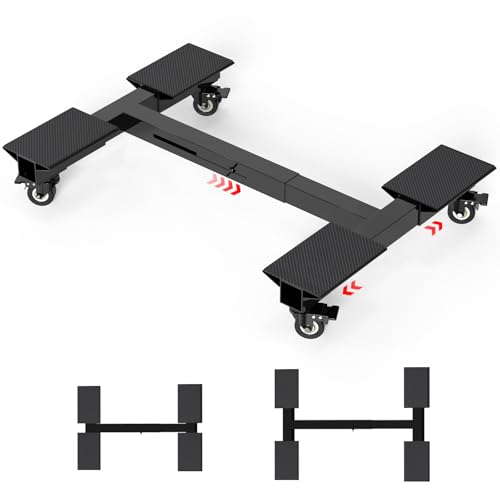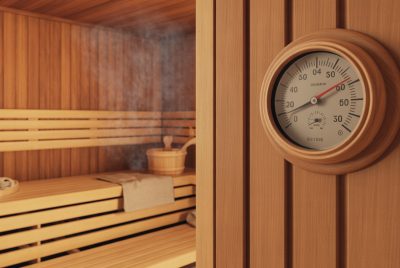How to Move a Hot Tub: Complete Moving Guide
*We may earn a commission for purchases made using our links. Please see our disclosure to learn more.
Moving a hot tub is one of those projects that can feel overwhelming at first glance. Whether relocating to a new home, redecorating a backyard, or simply repositioning for better functionality, the prospect of moving a heavy, water-filled spa intimidates many homeowners. Yet with the right preparation, knowledge, and tools, this daunting task becomes manageable. This guide transforms the anxiety of relocating your hot tub into a structured, achievable process that ensures both the equipment’s safety and personal well-being throughout the move.
“The key to successfully moving a hot tub is proper planning and understanding the equipment’s weight and fragility.”
— Spa Industry Professional
Key Takeaways
- Preparation is essential: Draining, disconnecting, and inspecting your hot tub before moving prevents damage and injuries
- Weight distribution matters: Understanding your hot tub’s weight and using proper equipment like dollies and moving straps is crucial for safe transport
- Professional help may be necessary: For hot tubs over 500 pounds, hiring movers experienced with spas can save time, effort, and prevent costly mistakes
- Location assessment is vital: Measure doorways, pathways, and the new location to ensure your hot tub will fit and be properly positioned
- Post-move setup requires care: Proper leveling, electrical reconnection, and water refilling set the foundation for years of trouble-free use
Recommended Products for Moving Your Hot Tub
Before diving into the detailed process, consider these essential tools available on Amazon:
GLISWAM Furniture Dolly
Make relocating your hot tub effortless with the GLISWAM Furniture Dolly 1500LBS Capacity. Its adjustable length and width design ensures a secure fit for heavy items like hot tubs, washing machines, or refrigerators. Built from durable iron and featuring 4 lockable caster wheels with a non-slip mat, it provides stability, safety, and smooth movement on any surface. Perfect for homeowners or professionals looking to move bulky items efficiently and safely.
If you’re wondering how to move a hot tub safely and efficiently, the GLISWAM Furniture Dolly is a must-have tool. Its adjustable design allows it to accommodate the large base of most hot tubs, while its heavy-duty iron frame supports up to 1500 lbs. The four lockable caster wheels and non-slip mat ensure your hot tub remains stable during transport, reducing the risk of damage. Whether you’re relocating within your backyard or moving a hot tub across a driveway, this dolly makes the job much easier and safer.
- Capacity: Supports up to 1500 lbs, ideal for heavy hot tubs and appliances
- Versatility: Adjustable length and width fits multiple item sizes
- Safety: Lockable caster wheels and non-slip mat prevent shifting during transport
- Weight: Heavy iron construction may be cumbersome to lift alone
- Surface Limitations: Best on flat surfaces; may be tricky on uneven terrain
- Assembly Required: Some setup needed before first use
EPXXUDD Moving Straps
Easily learn how to move a hot tub safely with the EPXXUDD Moving Straps. Designed for one or two people, these padded lifting straps distribute weight evenly, reducing strain and back pain when transporting heavy items like hot tubs, couches, mattresses, and appliances. Adjustable and portable, they offer a secure, versatile solution for moving large or awkward objects with minimal effort.
If you’re figuring out how to move a hot tub without heavy equipment, the EPXXUDD Moving Straps make it possible for one or two people to lift and carry safely. The padded straps evenly distribute weight, reducing back strain and preventing injury. Adjustable from 40 to 119 inches, they fit a variety of items, including hot tubs, sofas, mattresses, and appliances. Lightweight, portable, and easy to store, these straps are a professional-grade solution for safe, efficient moving.
- Capacity: Supports up to 800 lbs, perfect for heavy hot tubs and furniture
- Versatility: Can be used arm-mounted or shoulder-mounted for 1 or 2 people
- Portability: Adjustable and easy to store or carry in a toolbox
- Adjustment Needed: Straps require proper fitting for safe use
- Learning Curve: May take practice to lift safely without assistance
- Surface Dependent: Less effective on stairs without additional help
X-PROTECTOR Felt Furniture Sliders
Make moving heavy items like hot tubs simple and safe with X-PROTECTOR Felt Furniture Sliders. Designed for hardwood, tile, and other hard floors, these premium felt sliders reduce friction, prevent scratches, and allow your hot tub or furniture to glide effortlessly. Their durable felt and rubber foam construction ensures long-lasting use and easy repositioning of bulky items without extra tools.
If you’re looking for a simple solution for how to move a hot tub across hardwood or tile floors, the X-PROTECTOR Felt Furniture Sliders are ideal. Place the durable felt and rubber foam sliders under your hot tub’s base to easily glide it into position without scratching your floors. Reusable and easy to handle, these sliders make moving heavy or bulky items safer and less strenuous, especially when combined with lifting straps or a dolly.
- Ease of Use: Simply place under furniture or hot tubs to slide items effortlessly
- Floor Protection: Prevents scratches and damage on hardwood, tile, or laminate
- Durability: Thick felt and rubber foam designed for repeated use
- Weight Limit: Best for moderate weight; extremely heavy hot tubs may need additional support
- Surface Dependent: Works only on hard, smooth floors
- No Lifting: Sliders reduce friction but don’t help lift heavy items
Klein Tools 935DAG Digital Electronic Level and Angle Gauge
When figuring out how to move a hot tub, precision and balance are key — and the Klein Tools 935DAG Digital Electronic Level and Angle Gauge ensures both. This compact, easy-to-read tool accurately measures 0–90° and 0–180° angles, helping you level your hot tub perfectly after relocation. Its magnetic base attaches securely to metal surfaces, while the high-visibility display and auto-rotate feature make setup quick and accurate, even in low-light conditions.
After you’ve learned how to move a hot tub, ensuring it sits level is the next crucial step. The Klein Tools 935DAG Digital Electronic Level and Angle Gauge makes that process simple and precise. It measures both 0–90° and 0–180° ranges, letting you confirm your hot tub is perfectly balanced on its new surface. The magnetic base provides hands-free stability, and the bright, auto-rotating display guarantees accurate readings in any lighting. This tool is a must-have for anyone relocating or installing a hot tub, ensuring safety, performance, and a professional finish.
- Accuracy: Measures precise 0–90° and 0–180° angles for perfect leveling
- Ease of Use: Auto-rotating digital display and magnetic base for hands-free alignment
- Durability: Rugged ABS housing built to withstand jobsite conditions
- Battery Powered: Requires occasional replacement or recharge
- Metal Limitation: Magnetic base works only on ferromagnetic surfaces
- Small Size: Compact design may be easy to misplace if not stored properly
Understanding Your Hot Tub: The First Step
Before attempting to move a hot tub, understanding its construction and weight becomes paramount. Most residential hot tubs weigh between 300 and 1,000 pounds when empty, with some larger models exceeding 1,500 pounds. Portable spas tend to be lighter, while acrylic hot tubs are heavier due to their durable construction. The shell is typically made from acrylic, fiberglass, or rotomolded plastic, all of which can crack or break under improper handling.
The exterior cabinet, usually made from wood or composite materials, protects both the internal components and adds significant weight. Understanding these components helps you plan the most efficient moving route and determine whether professional assistance is necessary.
Planning Your Move: Assessment and Preparation
Measuring Your Route
The path your hot tub travels from its current location to the new destination requires careful measurement. Examine all doorways, pathways, decks, and stairs it must pass through. A hot tub that fits perfectly in one location might not fit through standard doorways or around tight corners. Measure the length, width, and height of your spa, then compare these dimensions to every obstacle in its path. If the hot tub cannot pass through certain doorways, consider whether walls can be temporarily removed or alternative routes exist.
Assessing the New Location
The destination requires equal attention. Confirm the ground is level and can support the hot tub’s weight. Soft soil, sand, or uneven terrain can cause settling and structural problems. The new location should have adequate drainage to prevent water from pooling around the spa. Verify that electrical connections or gas lines are accessible if needed for reconnection.
Creating a Timeline
Moving a hot tub typically requires four to eight hours, depending on distance, complexity, and the number of people helping. Schedule your move during favorable weather conditions. Avoid rainy days, as wet surfaces become slippery and increase safety risks. Plan to have all necessary equipment and helpers available before beginning the project.
Draining and Disconnecting: Preparation Phase
Turning Off and Cooling
Before draining, turn off all power to the hot tub and allow it to cool completely. This typically takes several hours and prevents thermal shock to the equipment and reduces safety risks during handling.
Complete Water Drainage
Connect a submersible pump or use the spa’s built-in drainage system to empty all water. Some hot tubs have a main drain valve; others require a pump for complete drainage. Drain the water slowly to prevent sudden weight shifts. Direct the water away from your foundation to avoid flooding or water damage.
Disconnecting Utilities
If your hot tub connects to electricity, hire a licensed electrician to safely disconnect the power supply. Do not attempt this yourself, as improper disconnection poses serious electrical hazards. For gas-heated models, the gas line must also be professionally disconnected. Take photos of all connections before disconnection; these images prove invaluable during reinstallation.
Removing Exterior Components
Remove any detachable parts like covers, steps, or handrails. These components reduce overall weight and prevent damage during the move. Store these items carefully in a secure location where they won’t be damaged or lost.
The Moving Process: Physical Execution
Gathering Your Equipment
Essential moving equipment includes a dolly rated for at least 1,000 pounds, heavy-duty moving straps, furniture sliders, and protective materials like cardboard or moving blankets. Having backup equipment prevents delays if something breaks during the move.
Positioning and Securing
Carefully position the dolly under the hot tub’s center of gravity. Most spas are heaviest at the middle. Use moving straps to secure the hot tub firmly to the dolly, ensuring it cannot shift during transport. Padding protects the spa’s exterior from scratches and dents. A team of four to six people provides ideal support, with individuals positioned strategically to maintain balance.
Moving Across Different Surfaces
On flat, smooth surfaces, rolling the dolly moves the hot tub efficiently. For decks or patios, consider using furniture sliders underneath the spa rather than a dolly—the sliding method sometimes works better on uneven surfaces. Stairs present the most challenging obstacle; many movers recommend disassembling hot tubs before moving them up or down stairs, though this requires technical knowledge. Professional movers have specialized equipment and experience for stairs.
Doorways and narrow passages demand patience and precision. Tilt the dolly or the hot tub at slight angles to gain extra clearance. Move slowly through tight spaces, adjusting the angle gradually rather than forcing the equipment. Taking time here prevents expensive damage.
Setting Up Your Hot Tub in Its New Location
Positioning on Level Ground
Place the hot tub carefully in its new location. Use a digital level to confirm the ground is perfectly level in all directions. An uneven foundation causes operational problems and can damage internal components. If the ground slopes slightly, add leveling materials under the spa’s feet until the surface becomes completely level.
Preparing the Foundation
A solid foundation prevents settling and water damage. Many experts recommend placing hot tubs on a concrete pad, composite material, or interlocking pavers. These materials provide drainage and prevent the spa from sinking into soft soil. Ensure proper drainage away from your foundation and neighboring structures.
Reconnecting Utilities
Hire licensed professionals to reconnect electrical systems and gas lines. This step is not a DIY project—improper installation creates fire hazards, electrical dangers, and voided warranties. Allow professionals to inspect your connections and test the system before using the hot tub.
Refilling and Testing
Begin refilling the hot tub slowly, checking for leaks throughout the process. If any cracks or damage occurred during the move, they often become apparent during refilling. Once filled, run the jets and heating system briefly to ensure all components function properly. Allow at least 24 hours before full use to ensure all systems stabilize.
Common Challenges and Solutions
Damage During Transport
Even with careful handling, hot tubs sometimes sustain minor damage during moving. Small cracks can be repaired with marine-grade epoxy or spa repair kits. Document any damage with photos for insurance purposes if you hired professional movers. Prevention through careful padding and secure strapping remains more effective than repair.
Weight Distribution Problems
Uneven weight distribution can cause the dolly to tip or the hot tub to shift during movement. Ensure all straps are equally tight and the load is centered on the dolly. If the hot tub feels unstable at any point, stop and reassess before continuing.
Access and Space Limitations
Some yards lack adequate space for maneuvering a large hot tub. If your new location doesn’t provide enough room for a dolly, consider having professionals disassemble and reassemble the spa. This approach takes longer but sometimes represents the only viable option.
Environmental Factors
Cold weather can make plastic and seals brittle, increasing the risk of cracks. Moving during warm, dry weather significantly reduces these risks. If you must move during cold months, allow the hot tub to warm gradually after moving to its new location before refilling.
Making Your Move Easier: Practical Advice
Recruit Experienced Help
Your moving team should include people comfortable lifting heavy items and following instructions. Clear communication prevents misunderstandings and injuries. Assign specific roles: one person directs, others lift and position.
Take Preventive Breaks
Frequent breaks reduce fatigue and maintain focus. Tired workers make mistakes that lead to injuries and equipment damage. Stay hydrated and maintain a steady, sustainable pace throughout the move.
Invest in Protective Materials
Quality moving blankets, padding, and straps protect your investment. These materials are inexpensive compared to repairing or replacing a damaged hot tub. Proper protection transforms a stressful move into a successful project.
Create a Pre-Move Checklist
Document every connection, setting, and component before moving. Photograph the electrical setup, water line connections, and any customizations. This preparation makes reassembly infinitely easier and prevents forgotten steps.
Consider Professional Movers
For hot tubs over 500 pounds or complex moves, professional hot tub movers justify their cost. They carry insurance, have specialized equipment, and bring years of experience. This investment eliminates stress and virtually guarantees a successful move.
Celebrating Your Success and Moving Forward
Successfully moving a hot tub represents a significant accomplishment. The satisfaction of having your spa operational in its new location opens the door to continued enjoyment. Many people who move their hot tubs report improved satisfaction, as they’ve overcome a major challenge and gained deeper understanding of their equipment’s needs.
Your moving experience provides valuable knowledge for future maintenance and troubleshooting. Understanding how your hot tub connects and functions helps you maintain it better going forward. This knowledge often leads to more confident ownership and extended equipment lifespan.
Conclusion
Moving a hot tub requires careful planning, proper equipment, and realistic assessment of your abilities and limitations. By following the steps outlined in this guide—from initial assessment and preparation through final setup and testing—you can successfully relocate your spa to a new location. Remember that professional assistance is always available if you need it, and their expertise often prevents costly mistakes. Whether you tackle this project independently or with professional help, the key to success remains the same: preparation, patience, and attention to detail. Your hot tub will reward you with years of relaxation and enjoyment in its new home.
Frequently Asked Questions
Q1: How much does it cost to move a hot tub professionally?
Professional hot tub moving typically costs between $500 and $2,000, depending on distance, complexity, and local rates. This investment often proves worthwhile compared to the risk of damage from an unsuccessful DIY move.
Q2: Can I move a hot tub by myself without professional help?
Smaller, portable hot tubs weighing under 300 pounds can sometimes be moved by two to three capable individuals. Larger models almost always require professional assistance or a team of four to six experienced helpers.
Q3: How long does it take to drain a hot tub completely?
Complete drainage typically takes two to four hours, depending on your spa’s size and drainage method. Using a submersible pump accelerates the process compared to gravity drainage through a drain valve.
Q4: What should I do if my hot tub gets damaged during the move?
Document damage with photos and contact the company’s warranty department immediately. Minor cracks can often be repaired with specialty epoxy products. For major damage, contact your homeowner’s insurance if professional movers caused the damage.
Q5: How soon after moving can I use my hot tub?
After refilling and reconnecting utilities, allow at least 24 hours before full use. This waiting period allows all systems to stabilize and ensures everything functions properly before you begin regular operation.
















